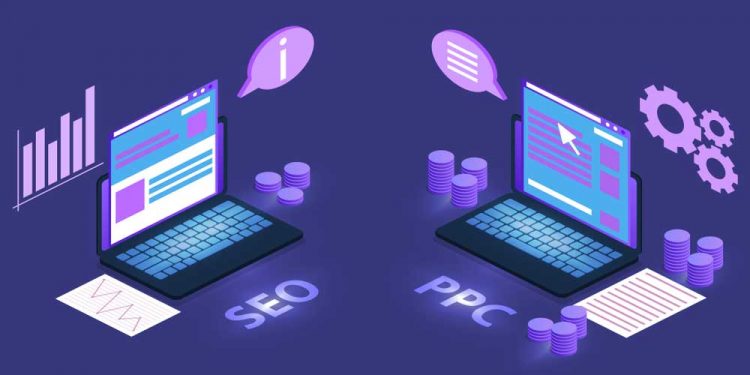Many of us PPC professionals didn’t learn much about running paid search campaigns. If we did receive training for it, then it was either basic and/or limited.
And as PPC continues to evolve, we need to think differently and go beyond “embracing automation.” If you have been advertising for years, you probably know that you have to manage key elements of campaigns.
But today, things have changed and it’s time to learn how we can adjust to today’s times.
Wondering what’s been changing in the digital world in terms of PPC ads? Read on!
What Has Changed In the PPC INDUSTRY?
PPC has continued to change the digital marketing industry ever since it was created! With the use of automation and AI, as well as machine learning, you have all the data you need to create the ideal campaign to hook your target market.
All these new technologies hold many benefits, from saving you time to cutting your budget and efforts. That way, you can focus more on what’s more important beyond PPC campaigns.
But what exact changes have PPC gone through and why is it relevant to marketers? These are the top five changes in the PPC industry to study on:
1. A/B Testing
It’s simple: You will test one creative strategy against another, with both of them going to similar audiences and comparable marketing situations.
The technologies to deploy, measure, and quickly select a winner from your tests has improved throughout the years, though the concept of A/B testing stays the same.
Right now, there isn’t a real winner as you advertise using machine learning, which would assemble various pieces of your ad and discover the correct copy variations based on your target audience and search intent.
Today’s technology allows you to get a lot more ad copy variations, with thousands of possibilities! This can save you a ton of time compared to the older days when you have to manually test variations that may end up performing poorly.
However, you should still be patient as machine learning would be brutal with performance.
2. Purchase Journey Insights
We all know about what the Purchase Journey is all about. Regardless of what you call it (journeys, fuels, flywheels), it’s vital to develop an understanding of your customers’ behavior and the various stages of their purchasing decision and how you’re able to help them out.
Advertisers and marketers have learned how to see and analyze data to create such purchasing journey insights for quite some time. BUT, what they haven’t been able to fully grasp until now is how to find actionable insights rather than just something that’s interesting.
Here are now technologies’ amazing capabilities of ad-platform machine learning:
- Mountains of data can now be analyzed in no time
- You get to discover actionable insights from specific customers you might haven’t considered yet, giving you more opportunities to sell and advertise to wider audiences
3. Audience
As advertisers, we are taught to find and understand our audiences, and then craft the interesting messages that would compel our audience to take action.
Back in the day, advertisers have had limited capabilities when reaching and messaging their audiences. While direct response marketers have already had accesses to segment lists of their customers based on different data (such as age, purchase data, income level, and marital status), advertisers haven’t been able to answer specific queries and display promotions to specific audiences until now!
Advertisers such as a PPC Agency Brisbane continue to learn how to perform audience targeting for campaign strategies. That way, you can have messages catered to even more specified target audiences, which will provide you even more successful results!
4. Cost-Per-Acquisition (CPA)
The way you can target specific customers for campaigns changes the way one looks at cost-per-acquisition (CPA) goals.
Before, PPC campaigns measure CPA for both branded and non-branded ads. More detailed campaigns break into measurements further for specifics.
If you want successful PPC metrics, you have to focus on more than just your last clicks to determine the effective marketing tactics. You have to look into more factors and data to determine your top priority in your audience.
Today, you can now structure your account for various CPA goals and success metrics for your PPC ads. This gives you more control over what you want to achieve and machine learning will do the job in accomplishing your goals while measuring detailed metrics for you to use for PPC campaign improvement.
5. Campaign Control
PPC practitioners Like Joel House Brisbane SEO might feel like they have less control compared to what they had years ago. Others feel like they have more control. Surprisingly, both are correct!
For instance, Google Ads may ignore negative keywords, which ruins your strategies. This can be irritating, as PPC marketers are trained to have as much control as possible over their campaigns. They want to exercise tighter control over the keywords and match types, and because of technology today, you have less ability to do so.
However, you still have control over crucial factors, such as:
- Control who sees your advertisements
- Control your creative inputs to entice people to click your ad and take action
Wrapping It Up
There have been so many changes to PPC ads today, but even with the machine and AI learning, there are some things you should hang on to. You will need to continue honing your strategic thinking and follow the ad copy principles marketers have known for generations.
While you have the powerful machine learning platform to do the heavier load, it won’t do you any good unless you’re able to properly use the data and results it provides.
So it’s time to get to work and learn more about the principles of ad copywriting and creating great outputs to entice your target market! So utilize these huge changes on paid search and see what more you can do with today’s technology for your next ad campaign. Good luck!



